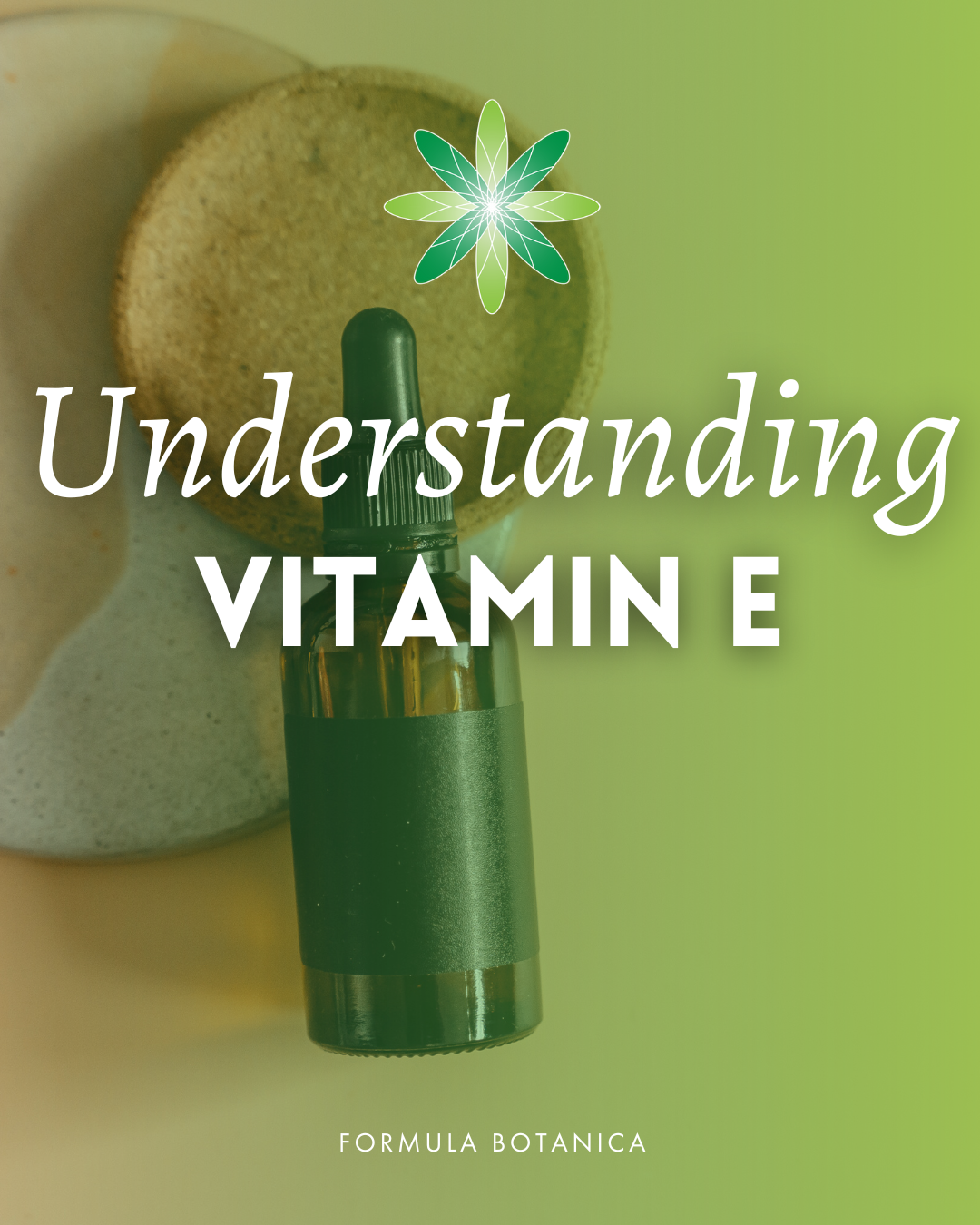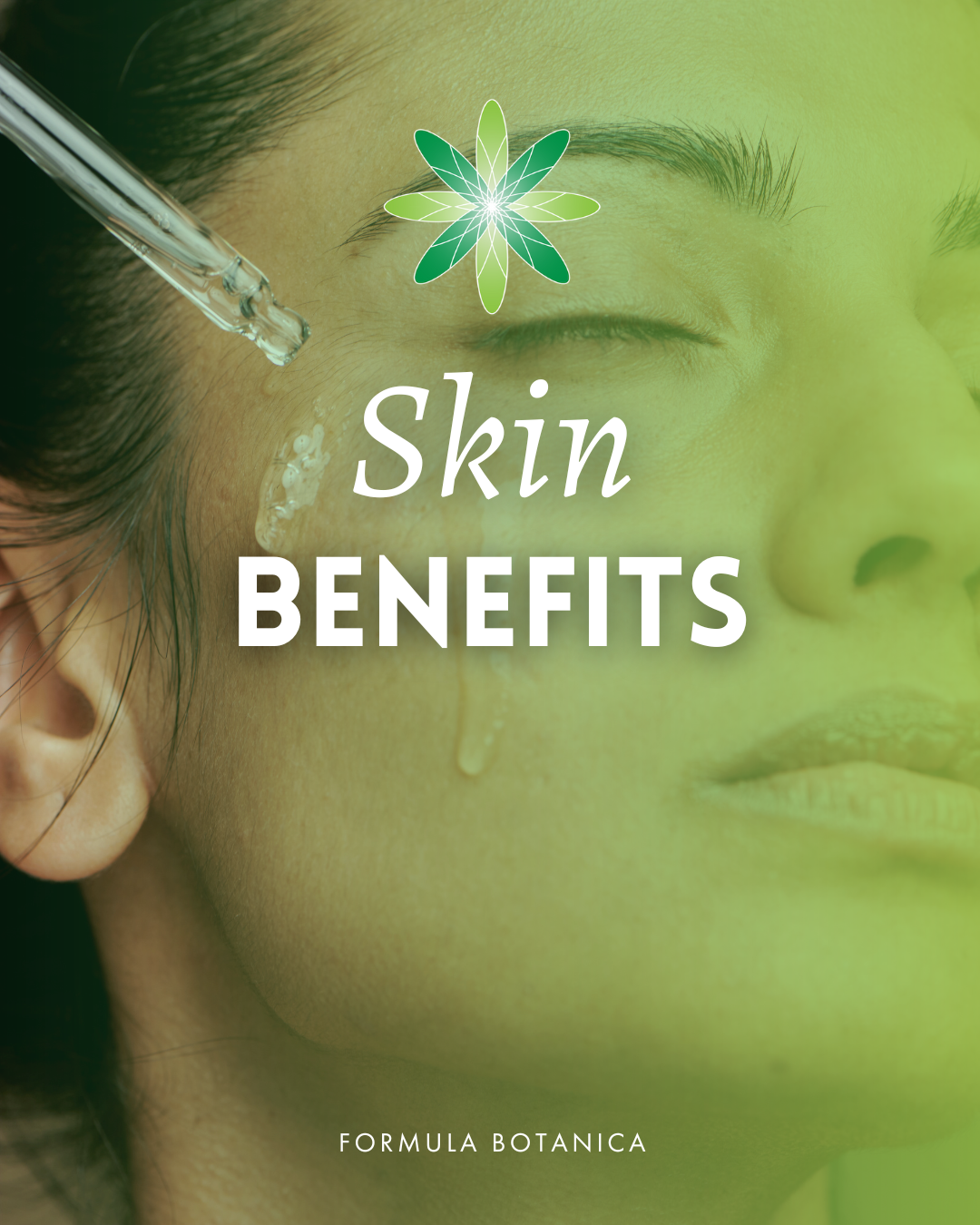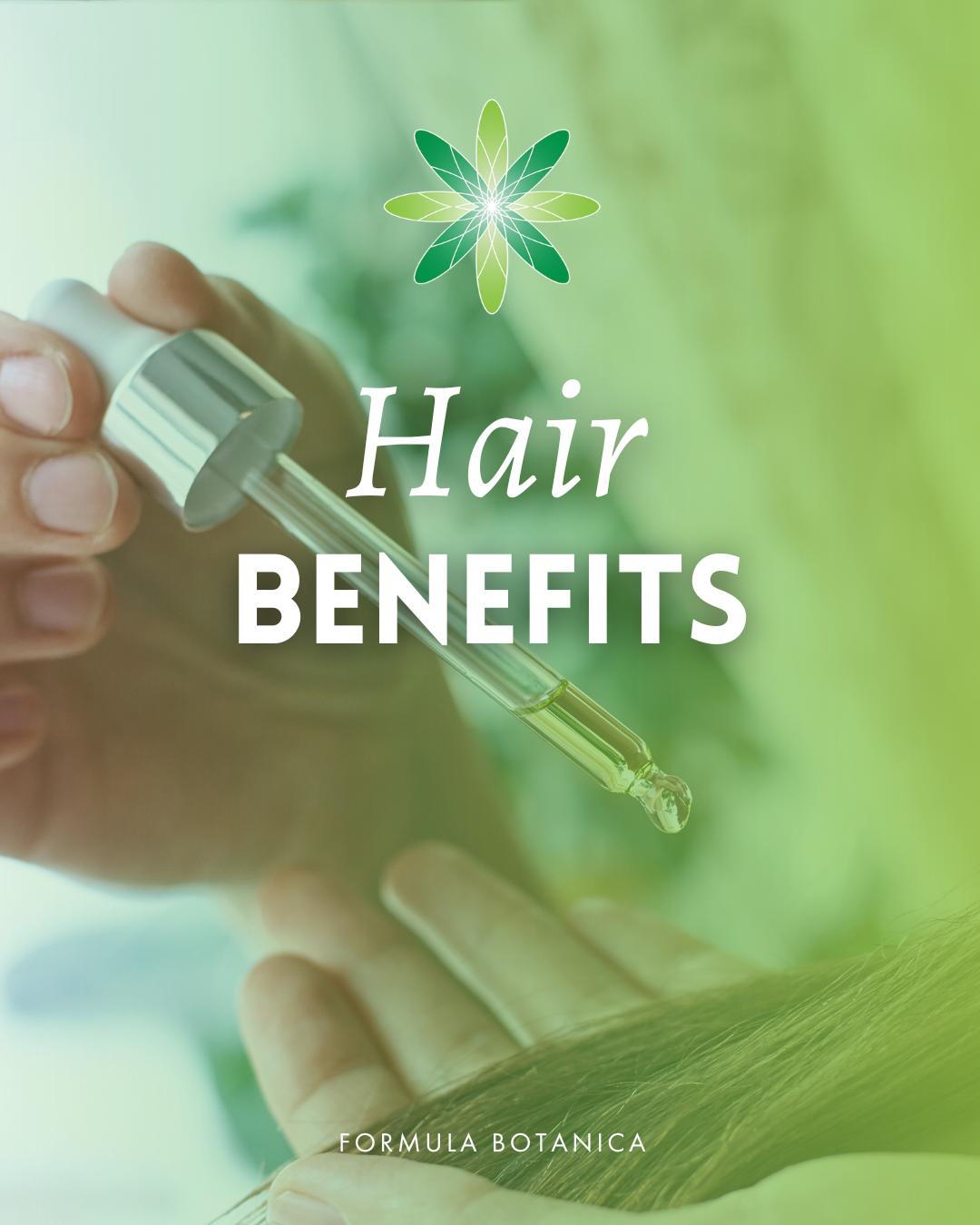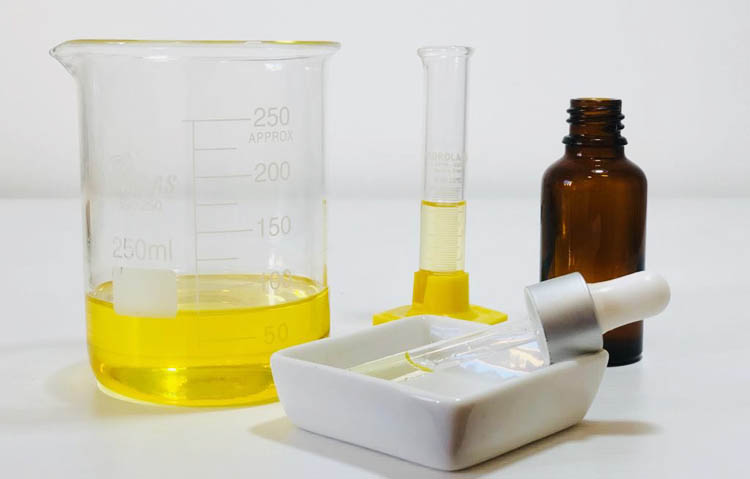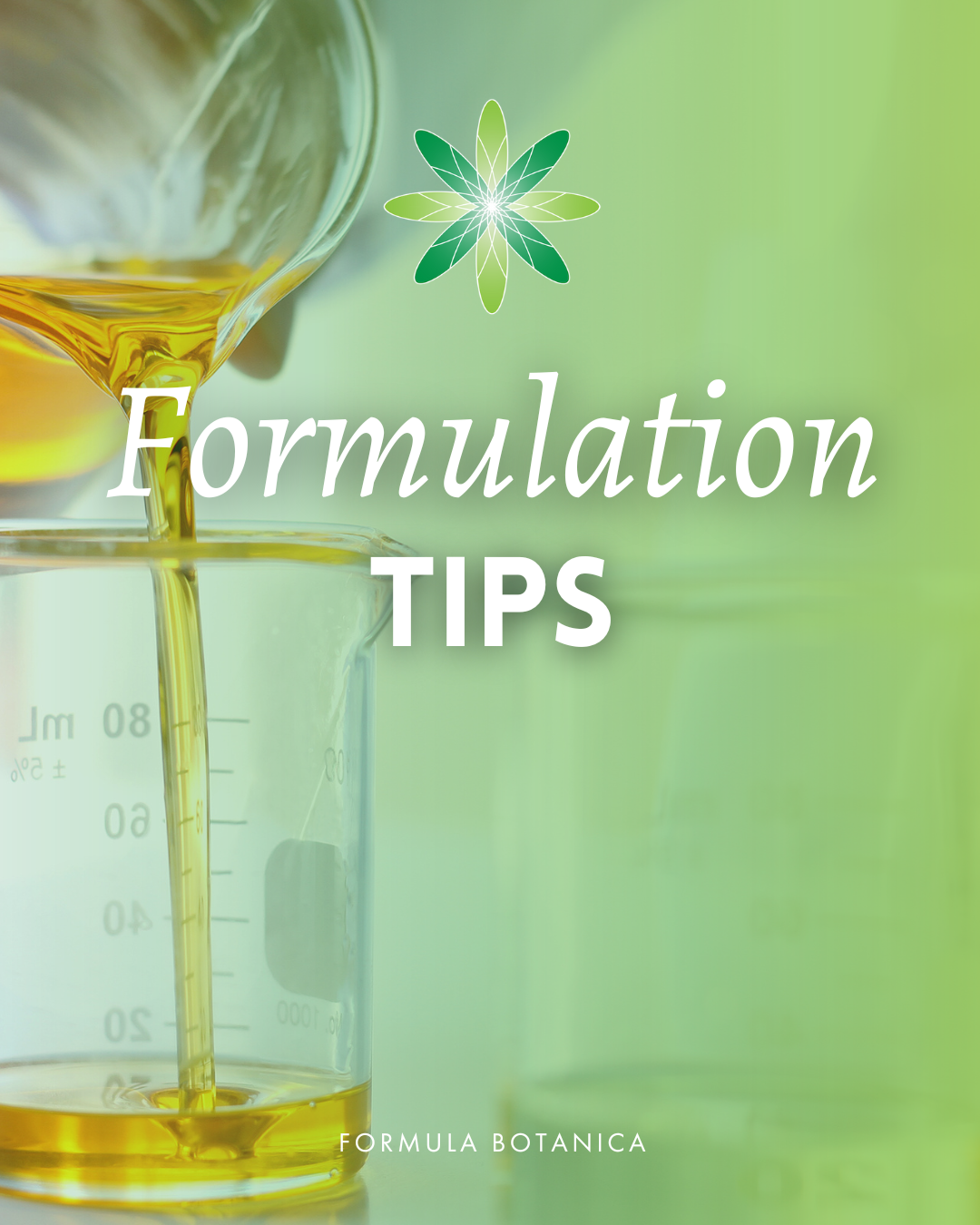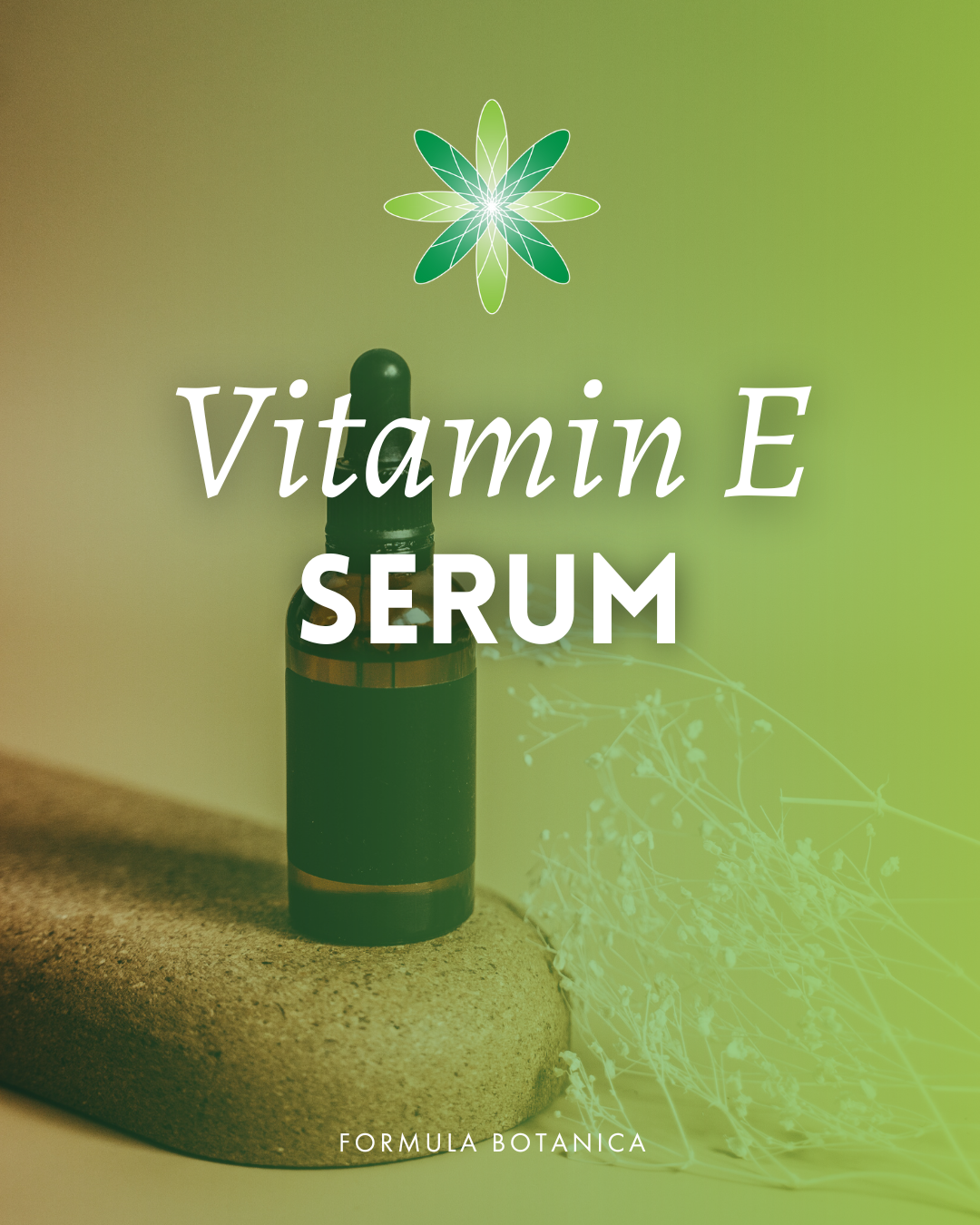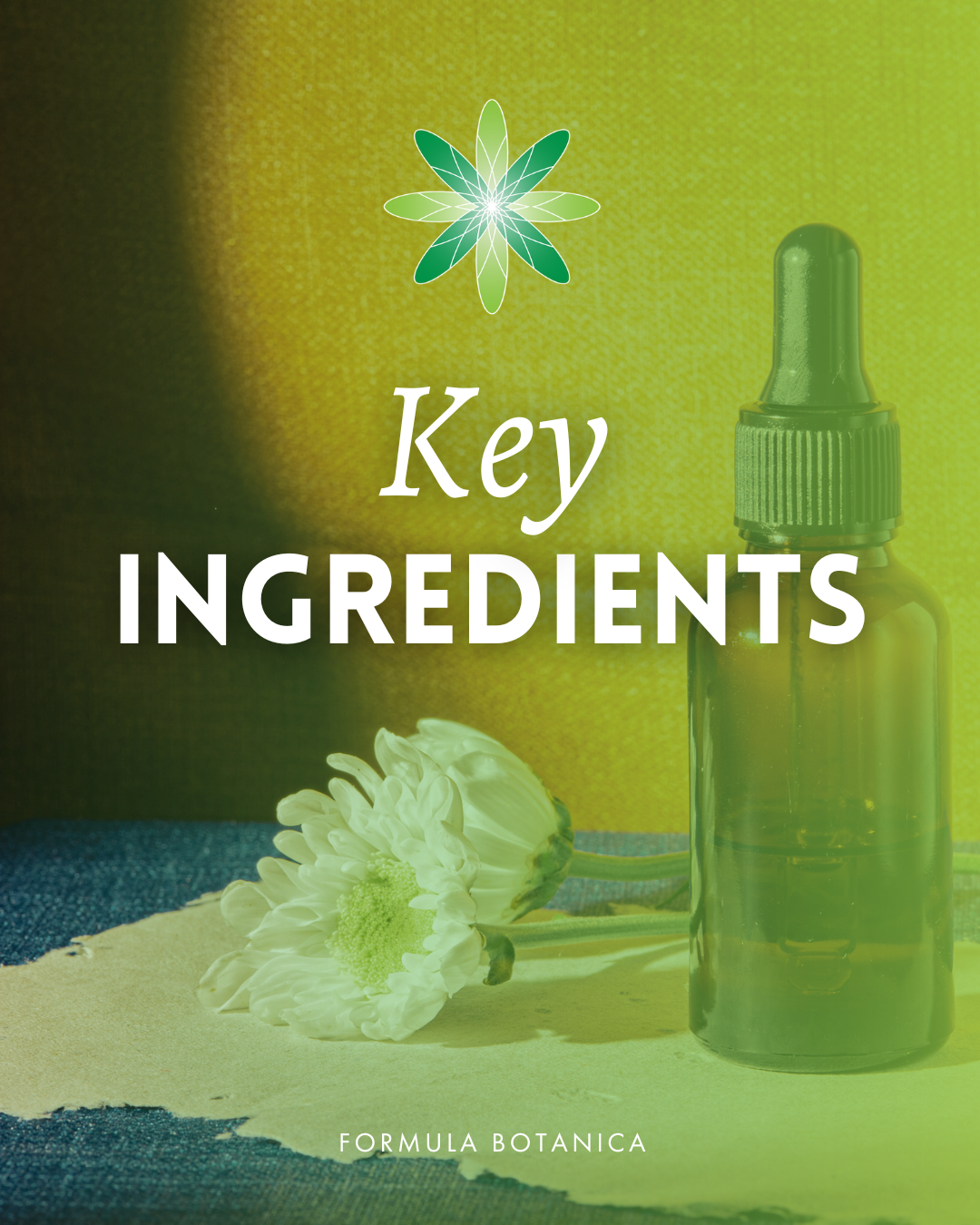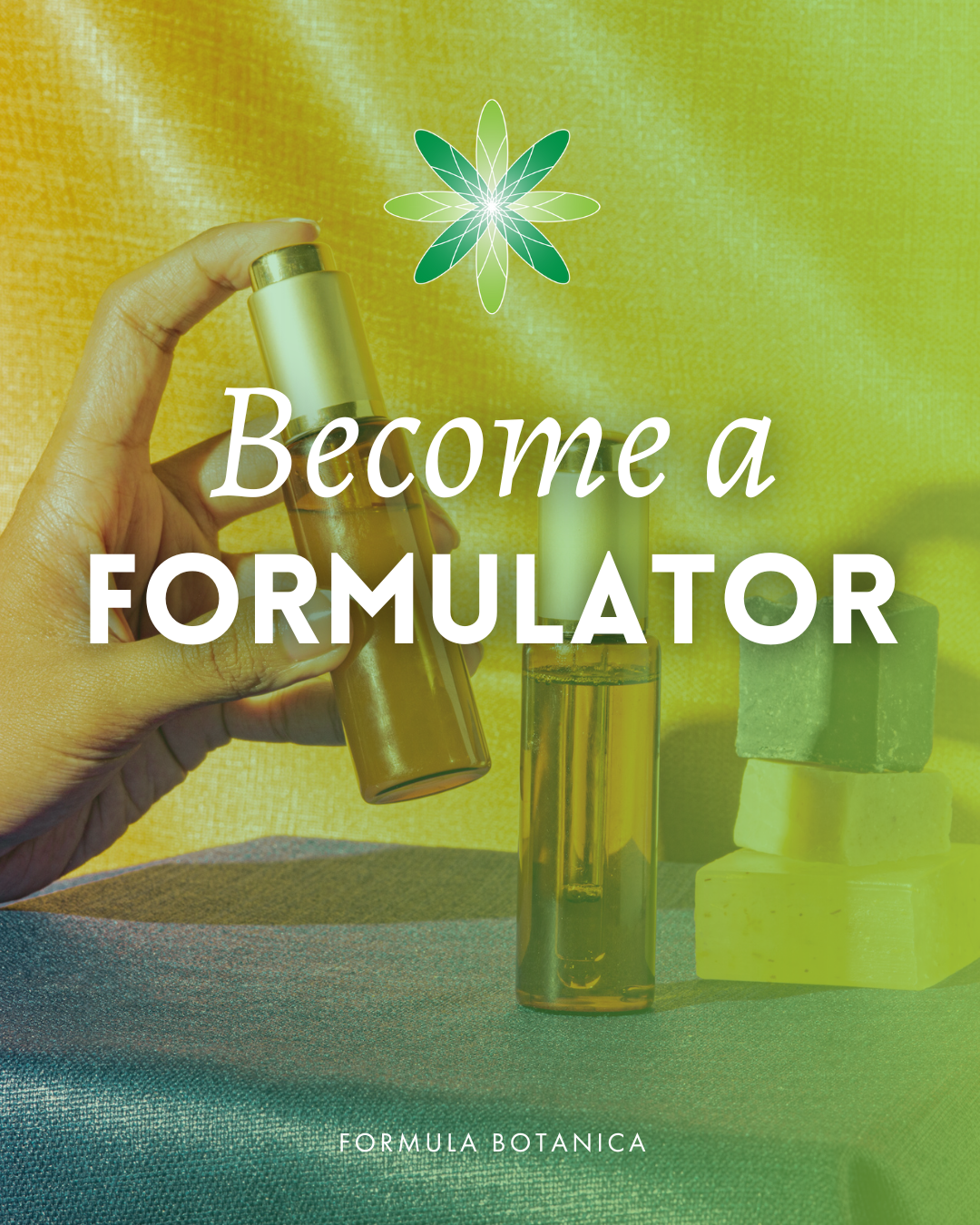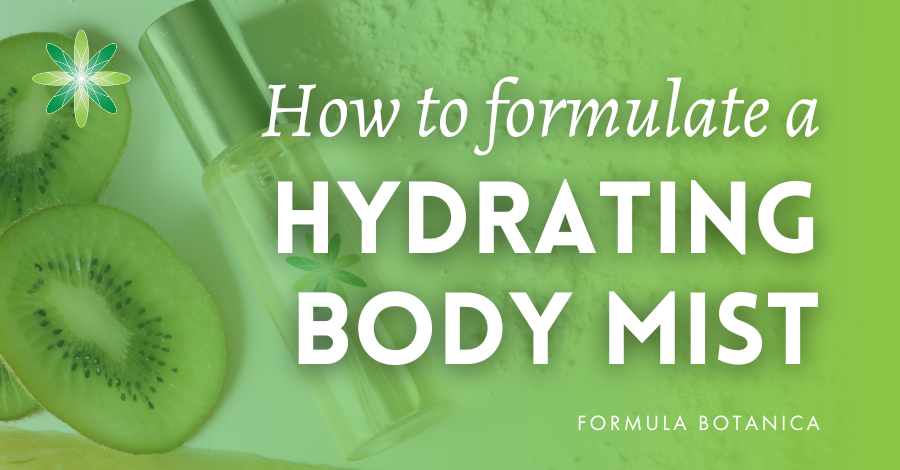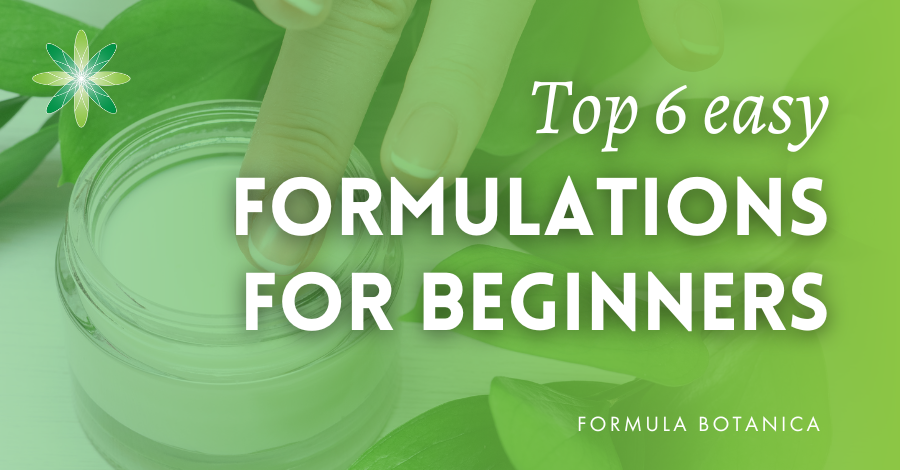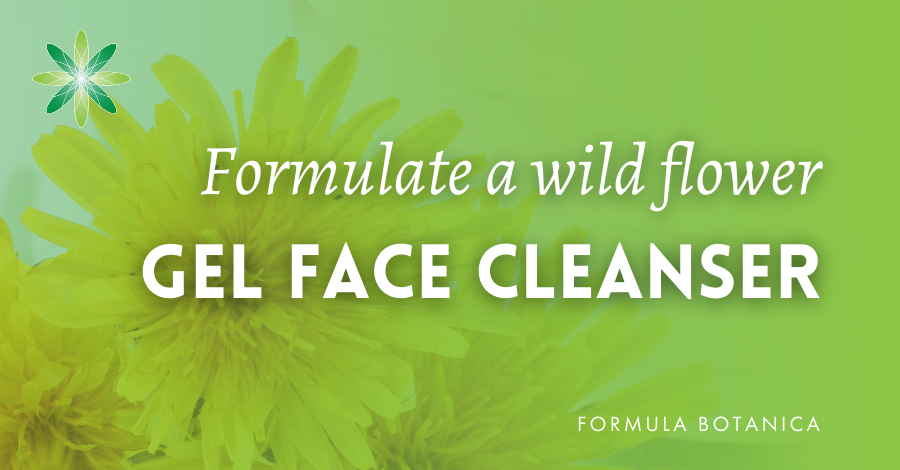Updated: 30.09.25
Ever wondered why vitamin E shows up in so many skincare and haircare formulations? At first glance, it might seem like just another common ingredient, but in reality, vitamin E is one of the most powerful multitaskers in your formulator’s toolkit.
This antioxidant not only supports happy, resilient skin but also helps protect your cosmetic products by extending their shelf life and stability.
In this post, we’ll unpack the basics of vitamin E, explore its different forms and skin benefits, and share a high-performance vitamin E serum formula you can easily recreate at home.
What is vitamin E?
Vitamin E is a generic term for a range of different antioxidants that are widely used in the natural and organic skincare and haircare sector. These antioxidants play an important role in skin and hair health and are highly valued across the cosmetics industry. Curious to learn more about antioxidants? Check out the post below:
Vitamin E is the predominant, physiologic antioxidant barrier in the stratum corneum, the outermost layer of the epidermis, where it protects the lipid structures and proteins from oxidation by scavenging free radicals and hindering the chain reactions that lead to DNA damage and ageing.
It strengthens the skin’s defences against the harmful impact of certain environmental factors and is therefore a very popular ingredient, and features, for example, in so-called anti-pollution cosmetics.
As an additional mechanism, vitamin E also regulates a protective network of enzymatic and non-enzymatic antioxidants present in our skin. As you can imagine, vitamin E is also present in many anti-ageing products, as the oxidative process plays a large role in our skin’s ageing.
Another great benefit of vitamin E’s antioxidant properties is to improve the shelf-life of cosmetic formulations and ingredients. This is one of the main reasons you will find vitamin E on the ingredients list of most cosmetic products you come across.
Understanding vitamin E
Before we get started on our vitamin E serum, let’s first get to know vitamin E better by going over some key facts:
What is an antioxidant?
Oxidation is a chemical reaction that can produce free radicals, leading to chain reactions that may damage the cells of organisms. An antioxidant is a molecule that stops these reactions.
What are the forms of vitamin E available?
The vitamin E group of antioxidants consists of two different main types: tocopherols and tocotrienols, with a total of eight analogues: α-, β-, γ-, δ-tocopherols and α-, β-, γ-, δ-tocotrienols. You can find multiple forms of synthetic derivatives.
Although tocotrienols have been shown to have greater antioxidant activity than tocopherols, they are mainly used in the pharmaceutical industry.
From all the tocopherol analogues, alpha-tocopherol is the most biologically active form, while gamma-tocopherol has the highest antioxidant activity.
Vitamin E benefits for the skin
Vitamin E occurs naturally in plants and is an essential nutrient to the human body that needs to be acquired by ingestion. However, studies show that topical application of vitamin E is more effective than oral intake in order to increase its concentration on the skin.
It also offers great emollient properties and works as a defence against the skin’s hazardous environmental agents like ultraviolet and visible irradiation, pro-oxidant air pollutants such as ozone, and ionising irradiation.
These agents are involved in many inflammatory skin disorders, cutaneous autoimmune diseases, phototoxicity, photosensitivity, and skin ageing.
Vitamin E benefits for the hair
Vitamin E’s antioxidant activity plays an important supporting role in haircare. Applied to the scalp and hair, it helps protect natural oils and the hair’s outer cuticle from oxidative stress caused by external factors like UV light and pollution. This protective effect supports a healthier scalp and helps hair look shinier and feel softer.
Similar to other oils, vitamin E can also smooth the hair surface, reducing frizz and giving strands a sleeker appearance.
While vitamin E does not directly repair hair structure, its antioxidant properties make it a valuable addition to hair oils, serums, masks, and scalp treatments. When used this way, it helps maintain scalp comfort and leaves hair with a natural, healthy glow.
Curious to learn how to make your own natural haircare? Then check out this helpful post:
Formulating with vitamin E
Here are some general things to keep in mind when formulating with vitamin E.
What types of vitamin E can you formulate with?
As an ingredient, vitamin E can be found in its natural form, usually as a blend of the four tocopherol isomers or as a synthetic product sold as a single isomer – the DL-alpha-tocopherol being the most widely available.
The D prefix indicates that the product is derived from natural sources, while the DL prefix indicates that the vitamin is synthetic. Our body only processes the natural form of vitamin E, and therefore, the skin would benefit more from the D form.
We advise you to use the diluted form of vitamin E, which is usually mixed with sunflower oil. The vitamin E concentration can vary from one supplier to another. Be aware that the more concentrated the liquid is, the more viscous and sticky it will be, making it more difficult to work with.
- What does IU mean, and is it important?
IU stands for International Units, and it is relevant for internal intake. Don’t worry about it when working on your formulations.
General formulation tips
Vitamin E molecules are lipophilic (oil-loving), which means that they like to blend with other oils, butters and fats. You can add vitamin E to your haircare and skincare formulations like anhydrous creams, balms, butters, scrubs and lip balms, and in the oil phase of emulsions. The typical concentration of usage is 1%.
Vitamin E is sensitive to high temperatures and light. So you should keep it in a cool and dry place and add it to your formula in the cool-down phase (below 40 °C). This is also an important fact to consider while designing your formula and choosing its packaging.
Keep in mind that oil refining can highly reduce tocopherol concentration in oils, especially in the deodorisation process, where vitamin E becomes a valuable by-product that is fractionated and then sold. Therefore, you should try to source and use ingredients in their most unadulterated forms (unrefined) to ensure you maximise their beneficial natural properties in your skincare and haircare formulations.
Can vitamin E have a pro-oxidative effect?
While vitamin E is celebrated for its antioxidant activity, you should be aware that it can also behave as a pro-oxidant under certain conditions (meaning it can induce oxidative stress in the body, by generating reactive oxygen species or by inhibiting antioxidant systems).
This paradox occurs because once a tocopherol molecule donates a hydrogen atom to neutralise a free radical, it becomes a radical itself.
If these unstable tocopherol radicals are not stabilised – for instance, by other antioxidants in the formula – they may trigger further oxidation, accelerating rancidity or even causing discolouration. This effect is most likely to occur:
- at high concentrations,
- in formulations contaminated with transition metals, and
- more often with alpha-tocopherol compared with other isoforms.
But this doesn’t mean you should avoid vitamin E. Instead, it highlights the importance of using it at the right concentration (around 0.5–1% is typically sufficient) and designing a stable, well-balanced formulation.
By pairing vitamin E with other antioxidants and ensuring Good Manufacturing Practice (GMP), you can maximise its benefits while avoiding its potential drawbacks.
Curious to learn more about antioxidants? Then check out the Antioxidant Mini Lab, which is part of our exclusive membership site for formulators, the Lab at Formula Botanica.
Our high-performance vitamin E serum
Considering that vitamin E levels naturally decrease with age, UV light and sun exposure, we have chosen to create a high-performance vitamin E serum with anti-ageing activity.
For this formula, we combined vitamin E with other carefully selected ingredients to ensure our product is focused on improving the skin’s barrier function, enhancing epidermal rejuvenation and reducing skin inflammation.
Let’s look at different mechanisms that make vitamin E an amazing anti-ageing ingredient. Vitamin E helps:
- Protect against UV-induced effects on the skin
- Prevent the formation of wrinkles by blocking free radical damage
- Reduce wrinkles by boosting collagen production
- Support new skin cell growth; and
- Speed up cell regeneration and reduce skin inflammation.
Our formula: Make a vitamin E serum
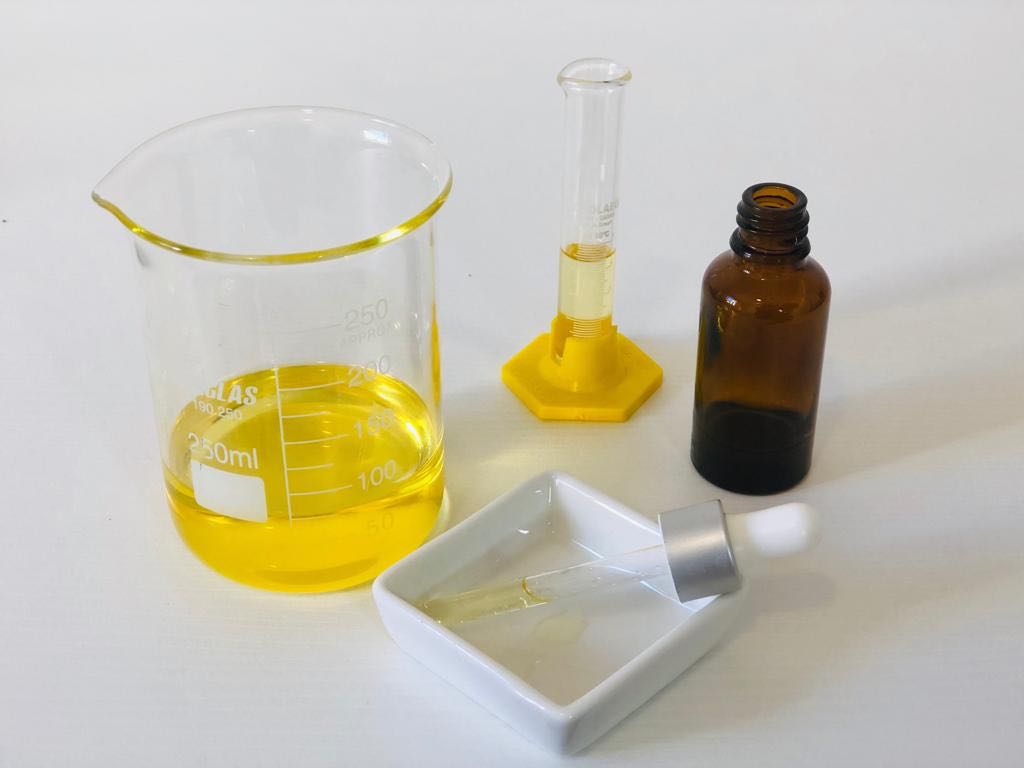
- Makes: 30g
- Level: Beginner-friendly
- Formulation method: Cold process
| Phase | Ingredients | INCI | Weight (g) |
| A | Wheatgerm oil | Triticum Vulgare (Wheat) Germ Oil | 7.50 |
| A | Sunflower oil | Helianthus Annuus (Sunflower) Seed Oil | 6.00 |
| A | Jojoba oil | Simmondsia Chinensis (Jojoba) Seed Oil | 12.00 |
| A | Dermofeel® sensolv MB | Isoamyl Laurate | 1.50 |
| A | Plantasens® Olive Squalane | Squalane | 1.65 |
| B | Evening primrose seed Co2 extract | Oenothera Biennis Seed Extract, Helianthus Annuus Seed Oil, Rosmarinus Officinalis Leaf Extract | 0.75 |
| B | Vitamin E | Tocopherol | 0.60 |
| Total: 30.00 |
Equipment:
For this formulation, you’ll need:
- A jewellery scale (0.01g precision)
- 2 beakers
- Glass rods
- And suitable packaging (pipette dropper glass bottle, or pump dispenser glass bottle)
Formulation method:
Here’s how to make this high-performance vitamin E serum. Make sure you comply with GMP before you start formulating and throughout the manufacturing process.
- Step 1: Weigh and blend your botanical oils
In a clean and sanitised glass beaker, weigh and blend the wheatgerm, sunflower, and jojoba oils, taring between each addition (use the ‘tare’ button on your scale).
Add the Dermofeel® sensolv MB and squalane and stir with a glass rod until you get a homogenous blend.
- Step 2: Weigh and blend your CO2 extract and vitamin E
In another beaker, weigh and blend the Co2 extract and vitamin E.
- Step 3: Mix both together
Carefully pour the Co2 extract and vitamin E blend into your botanical oil blend, using a glass rod until it is completely mixed.
- Step 4: Package & label
Now you can pour your product into a bottle with a drop dispenser. Don’t forget to label your formulation with the batch name and manufacturing date. And that’s it! You’ve made your very own high-performance vitamin E serum.
Ingredients:
Here’s some background information on our ingredients:
- Wheat germ oil is one of the richest natural sources of tocopherols (1300−2700 mg/kg). It also contains significant quantities of bioactive compounds, including phytosterols, policosanols, carotenoids, thiamine, and riboflavin.
- Squalane derives from squalene, which is a natural component of our skin. Squalane is a highly effective emollient. You can read more about it here.
- Sunflower oil is a rich source of vitamin E and has been shown to exert positive effects in maintaining and repairing the skin barrier. It regulates keratinocyte proliferation, inflammation, and skin barrier homeostasis.
- Dermofeel® sensolv MB is an emollient and was added here to improve the skin feel of this formula.
- Evening primrose seed CO2 extract is rich in essential fatty acids and phytosterols. It presents anti-inflammatory activity and is widely used in anti-ageing skincare products.
- Jojoba oil, besides having a high concentration of vitamin E, also exerts anti-inflammatory activity and builds skin protection barrier function, as well as increasing the speed of barrier recovery. Learn about jojoba oil here.
Become a certified organic skincare formulator
Now it’s your turn to give this vitamin E serum a go! If you’d like to explore more ways of working with this powerhouse ingredient, check out our post on how to make a nighttime facial oil for mature skin – or experiment by swapping in other vitamin E–rich oils to make the formula your own.
We’d love to hear how your serum turns out, so don’t forget to share your results with us in the comments below.
If this has inspired you, check out our Diploma in Organic Skincare Formulation, which teaches you how to create over 25+ natural skincare products from scratch. But first, try out our sample class for a taste of our award-winning courses and what to expect as a Formula Botanica student.
FAQ
- What does vitamin E do for the skin?
Vitamin E is a catch-all term for a range of antioxidants and is a common ingredient in natural skincare formulations. It helps prevent not only the oxidation of formulations, thereby extending their shelf life, but it also has an important role in boosting the antioxidant barrier of the skin’s epidermis.
This vitamin helps protect stratum corneum lipids and proteins by scavenging free radicals that cause their cellular damage, which in turn triggers a chain reaction leading to premature skin ageing. It also has excellent emollient properties, can boost collagen production, and helps protect the skin against damaging environmental factors such as pollution.
- How do you make a vitamin E serum?
Vitamin E is lipophilic (oil-loving), so it is best used in a facial oil or serum formulation which contains other botanical oils rich in vitamin E. Look for oils which have longer shelf lives and are less prone to oxidation. Wheatgerm, sweet almond oil, sunflower, grapeseed and safflower are all great options and are also naturally high in vitamin E.
- How can I make my own natural face serum?
One of the simplest skincare products you can make at home is a natural face serum.
All you need are a few carefully chosen botanical oils – no heating or emulsifying required. Opt for cold-pressed, unrefined oils, as these retain valuable phytosterols, minerals, and skin-beneficial vitamins such as vitamin E and oil-soluble vitamin C.
For an extra antioxidant boost, add around 1% vitamin E. Not only will this enhance your serum’s performance on the skin, but it will also help extend its shelf life.
FREE TRAINING
Learn how to become an
Organic Skincare Formulator
FREE TRAINING
How to become an
Organic Skincare Entrepreneur
FREE TRAINING
How to become an
Organic Skincare Entrepreneur
Leave us a comment
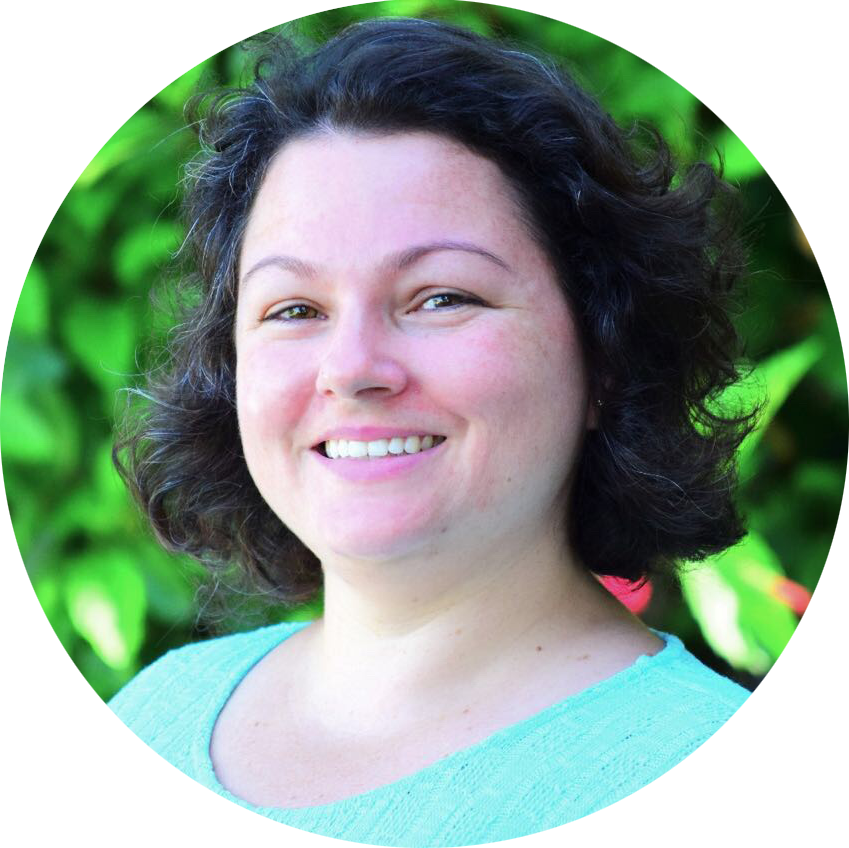
Eliziane is a Pharmacist and Biochemist, manages our Student Experience Team and provides technical advice for the ingredients research we undertake and provide. She loves bringing together the concepts of science, sustainability and organics. Read more about the Formula Botanica team.



